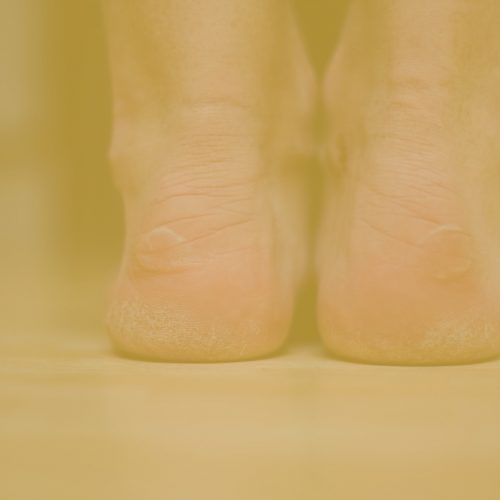Are you wincing with every step due to persistent foot and ankle pain? You’re not alone. Foot pain can be incredibly frustrating and disruptive to daily life. But fear not because relief is within your reach.
In this article, we’ll uncover effective strategies to conquer foot and ankle pain, allowing you to regain mobility and comfort. Bid farewell to discomfort and say hello to a life without limitations.
Common Causes of Foot and Ankle Pain
Foot and ankle pain can stem from various factors, including symptoms and treatment approaches. Understanding the common causes of this discomfort is the first step towards finding effective relief.
1. Plantar Fasciitis: The Arch Enemy
The inflammation of the plantar fascia, which is a thick band of tissue that runs along the sole, linking the heel bone to the toes, is the major symptom of plantar fasciitis, which is a common ailment. Plantar fasciitis can be treated with anti-inflammatory medication and stretching exercises. Inflammation of the plantar fascia is the hallmark symptom of plantar fasciitis, a disorder that affects many people.
Plantar fasciitis is one of the most common causes of heel pain in adults and is characterised by plantar fascia inflammation. This condition is almost always the result of overuse, and it is most likely to manifest itself during activities in which the participant is required to stand, walk, or run for extended periods of time.
In addition, one of the risk factors for developing this ailment is sitting for extended periods of time. Those who participate in the activity while wearing shoes that are not meant for it are also at an increased risk of injury. Additionally, the risk of damage is increased for those who are overweight.
Plantar fasciitis is a disorder that is defined by inflammation of the plantar fascia. One of the symptoms of plantar fasciitis is pain described as being “sharp and stabbing” in the heel. Patients have reported that they have the highest amount of discomfort either while they are moving around for the first time in the morning or after they have been sedentary for a lengthy period of time.
The pain may gradually improve as you walk around, but the discomfort could return after you have been active for a while. Both of these outcomes are plausible.
2. Achilles Tendonitis: A Sore Heel Story
Stress or strain that is repeated over time can cause inflammation of the Achilles tendon, which is located at the back of the heel and links the calf muscles to the heel bone. Achilles tendonitis is a disorder that frequently affects runners and other athletes who participate in sports that involve abrupt bursts of activity.
Because of the discomfort and stiffness that Achilles tendonitis generates in the back of the heel, it is difficult for people with this condition to participate in activities such as jogging, leaping, or even just climbing stairs. This disease, if left untreated, can develop to microtears in the tendon, which in turn increases the likelihood of the tendon completely rupturing.
3. Sprains and Strains: Ligament Woes
Accidental injuries, such as falls or sudden twists, can result in sprains or strains in the foot and ankle ligaments. Ligaments are tough bands of tissue that connect bones, providing stability to joints. A sprain refers to the stretching or tearing of ligaments, while a strain involves the stretching or tearing muscles or tendons.
Symptoms of a sprain or strain include pain, swelling, bruising, and limited range of motion. Depending on the severity of the injury, treatment can range from rest and ice to physical therapy or even surgery in severe cases.
4. Bunions: A Bump in the Road
Bunions are bony protrusions that develop at the base of the big toe, causing the big toe to bend towards the other toes. They often form due to genetic factors and wearing tight or ill-fitting shoes. Over time, the pressure on the joint causes it to become misaligned, resulting in pain and discomfort.
Bunions can make wearing shoes uncomfortable, and they may lead to the development of corns or calluses. As the condition progresses, the joint may become more inflamed, making walking or engaging in physical activities painful.
By understanding these common causes of foot and ankle pain, you can begin to identify the root of your discomfort. Remember that seeking professional medical advice and appropriate treatment is essential for effectively addressing your condition and finding relief.
Diagnosing the Pain
Experiencing foot and ankle pain can be distressing, but a proper diagnosis is crucial for effective treatment. Identifying the underlying cause of your discomfort requires a combination of professional medical assessment and diagnostic tools.
1. Professional Medical Assessment
When foot and ankle pain becomes a persistent issue, seeking medical attention is the first step towards finding relief. A medical professional, such as a podiatrist or orthopedic specialist, will thoroughly evaluate your symptoms, medical history, and lifestyle factors.
During the assessment, the podiatrist will ask about the nature of your pain, when it started, and any activities that exacerbate or alleviate it. They may also inquire about your footwear choices, exercise routines, and recent injuries. This information helps the podiatrist gain insights into the potential causes of your pain.
2. Imaging Tests: Peeking Inside
In some cases, more than a physical examination is needed to provide a clear picture of the problem. Your healthcare practitioner might recommend imaging tests to get a more detailed view. Common imaging methods include X-rays, ultrasound, and magnetic resonance imaging (MRI).
- X-rays: X-rays are useful for detecting issues with bone structures, such as fractures, bone spurs, or arthritic changes. They provide a detailed view of the bones and can help identify deformities or abnormalities.
- Ultrasound: Ultrasound uses sound waves to create images of soft tissues, such as muscles, tendons, and ligaments. It can help diagnose conditions like tendonitis or tears in the soft tissue.
- MRI: MRI scans provide detailed images of both bones and soft tissues. This imaging technique is especially useful for identifying problems like ligament tears, stress fractures, and more complex issues.
These imaging tests allow healthcare practitioners to visualise the internal structures of your foot and ankle, aiding in the accurate diagnosis of the underlying cause of your pain.
Remember that diagnosing foot and ankle pain requires a combination of your descriptions, physical examination findings, and diagnostic imaging results. With this comprehensive approach, your healthcare practitioner can create a tailored treatment plan that addresses your specific condition and helps you on your journey to recovery.
Easing the Discomfort
When foot and ankle pain strike, finding relief is a top priority. While the treatment approach may vary based on the underlying cause of your pain, there are several strategies you can use to alleviate discomfort and promote healing.
1. Rest and Elevation: Let It Heal
Rest is an essential component of recovery. Giving your feet and ankles a break from strenuous activities can help reduce inflammation and promote healing. Elevating the affected foot above heart level whenever possible can also aid in reducing swelling. Propping your foot on pillows while resting can facilitate improved blood circulation and prevent excessive fluid buildup.
2. Pain Relief Creams: Topical Soothing
Over-the-counter pain relief creams and ointments can provide targeted relief for localised pain. These topical treatments often contain ingredients like menthol or capsaicin, which create a cooling or warming sensation that can help temporarily alleviate discomfort. Remember to follow the usage instructions on the product’s label and consult with a healthcare practitioner if you have any concerns.
3. Orthotic Inserts: A Supportive Step
Orthotic inserts are specialised shoe inserts designed to provide additional support and cushioning. They can be particularly helpful in cases of conditions like plantar fasciitis or flat feet. Orthotics work by redistributing pressure and offering stability to the foot’s arches, thereby reducing strain on specific areas that may be contributing to your pain.
When considering orthotic inserts, it’s best to consult with a podiatrist or orthopedic specialist. They can evaluate your foot structure, walking gait, and specific needs to recommend the most suitable type of orthotics for your condition.
4. Medications and Pain Relievers
In some cases, healthcare practitioners may prescribe pain medications or non-steroidal anti-inflammatory drugs (NSAIDs) to manage pain and reduce inflammation. These medications can provide temporary relief, but it’s essential to follow your healthcare practitioner’s recommendations and avoid long-term use without medical supervision.
5. Compression and Bracing
For certain types of injuries, compression wraps or braces may be recommended. These supportive devices can help stabilise the affected area, reduce swelling, and provide a sense of security. However, it’s crucial to ensure that the compression is not too tight, as this could impede blood circulation.
Stretching and Strengthening
When it comes to addressing foot and ankle pain, incorporating stretching and strengthening exercises into your routine can play a significant role in your recovery process. These exercises can help improve flexibility, strengthen supportive muscles, and alleviate discomfort.
1. Calf Raises: Building Strength
Exercises that focus on the calf muscles can be as straightforward as calf lifts and still be quite effective. The ankle joint benefits from more support and stability when there is enough strength in the calf muscles. Calf raises can be performed by:
- Maintain your equilibrium by standing with your feet about hip-width apart and one hand on a solid surface.
- Raise your heels off the ground as far as you can before moving up onto your toes. Do this as slowly as you can.
- Maintain the lifted position for a brief period of time, and then slowly descend your heels to the ground.
- Perform this action for the specified number of times.
As your calf muscles strengthen, you can gradually increase the number of repetitions and sets. Calf raises can be done daily or incorporated into your regular exercise routine.
2. Toe Curls: Flexibility Matters
Toe curls are beneficial for improving flexibility in the toes and strengthening the foot muscles. This exercise can be particularly useful for conditions like plantar fasciitis and bunions. Here’s how to perform toe curls:
- Sit down on a chair with your feet flat on the floor.
- Place a small towel or cloth on the ground in front of you.
- Use your toes to scrunch up the towel, pulling it toward you.
- Release the towel and repeat the motion for a set of repetitions.
Toe curls help enhance the range of motion in your toes and can alleviate stiffness in the foot. Regularly practising this exercise can contribute to better foot flexibility and reduced discomfort.
Incorporating these stretching and strengthening exercises into your routine can help address the underlying issues contributing to foot and ankle pain. Remember to start slowly, especially if you’re new to exercising, and consult with a podiatrist before beginning any new exercise program.
By gradually building strength and flexibility in your feet and ankles, you can improve overall mobility and promote healing.
Footwear Matters
The right choice of footwear can make a world of difference when managing foot and ankle pain. Wearing shoes that provide adequate support, cushioning, and proper fit can help alleviate discomfort and prevent further issues. Here’s a closer look at how footwear plays a crucial role in maintaining foot health:
1. Choosing the Right Shoes
Selecting the right pair of shoes is the first step towards promoting foot comfort and preventing pain. When shopping for footwear, keep the following tips in mind:
- Fit: Choose shoes that fit well and allow enough room for your toes to move freely. Avoid shoes that are too tight, which can lead to pressure points and discomfort.
- Arch Support: Look for shoes with adequate arch support that matches the natural shape of your feet. Shoes with built-in arch support can help distribute your body weight evenly and reduce strain on the arches.
- Toe Box: Opt for shoes with a roomy toe box that allows your toes to wiggle comfortably. Narrow or pointed-toe boxes can lead to conditions like bunions and hammertoes.
- Cushioning: Shoes with proper cushioning can absorb shock and provide extra comfort, especially during high-impact activities like walking or running.
2. Arch Support: A Solid Foundation
Arch support is critical in maintaining foot health, as it helps distribute your body weight evenly and reduces the risk of strain and pain. Depending on your arch type (high, normal, or flat), you can choose shoes with appropriate arch support. For individuals with high arches, cushioned arch support is essential to prevent excessive pressure on the balls of the feet and heels. Those with flat feet may benefit from shoes with built-in medial arch support to provide stability and prevent overpronation.
3. Specialty Shoes and Orthotic Inserts
In some cases, off-the-shelf shoes might not provide the specific support your feet need. This is where specialty shoes and orthotic inserts come into play. Orthotic inserts are customised shoe inserts designed to address your specific foot structure and needs. They can provide additional arch support and cushioning and even help correct biomechanical issues.
If you have specific foot conditions or concerns, such as plantar fasciitis or overpronation, consulting a podiatrist or orthopedic specialist for recommendations on specialty shoes or custom orthotics can be beneficial.
4. Regular Shoe Checks
It’s important to assess the condition of your shoes regularly. Over time, the cushioning and support of shoes can wear down, leading to reduced comfort and potential foot pain. If you notice signs of wear and tear, such as flattened cushioning or worn-out treads, it’s time to consider replacing your shoes.
Preventive Measures
Taking proactive steps to prevent foot and ankle pain can go a long way in maintaining your overall foot health. By incorporating healthy habits and making mindful choices, you can reduce the risk of developing painful conditions and enjoy pain-free mobility. Here are some preventive measures to consider:
1. Maintain a Healthy Weight
Maintaining a healthy weight is not only beneficial for your overall well-being but also for your foot health. Excess body weight stresses your feet and ankles, leading to pain and discomfort. By adopting a balanced diet and engaging in regular physical activity, you can manage your weight and reduce the strain on your lower extremities.
2. Warm-Up and Cool Down: Exercise Safely
Before engaging in physical activities that involve your feet and ankles, it’s crucial to warm up your muscles and prepare your joints for movement. Dynamic stretches and gentle exercises can help increase blood flow and flexibility, reducing the risk of injuries. After your workout, remember to cool down and perform static stretches to maintain flexibility and prevent muscle tightness.
3. Proper Footwear for Activities
Different activities require different types of footwear. For instance, wearing running shoes while running and supportive sneakers while walking can provide the necessary cushioning and support for your feet. Wearing appropriate shoes for each activity can help prevent strain and reduce the risk of injuries.
4. Maintain Proper Foot Hygiene
Good foot hygiene plays a role in preventing infections and discomfort. Keep your feet clean and dry, especially between your toes, to prevent fungal infections like athlete’s foot. Trim your toenails straight across to avoid ingrown toenails, and moisturise your feet to prevent dryness and cracking.
5. Listen to Your Body
Pain is your body’s way of signalling that something is wrong. Don’t ignore persistent foot and ankle pain. If you experience discomfort that doesn’t improve with rest or over-the-counter treatments, seek professional medical advice. Early intervention can prevent minor issues from developing into more significant problems.
6. Avoid High-Impact Activities
Engaging in high-impact activities without proper training and preparation can increase the risk of injuries. If you’re new to an exercise routine or sport, start gradually and gradually increase intensity. Consult a fitness professional or coach for proper techniques and training plans.
7. Regular Check-Ups
Even if you’re not currently experiencing foot pain, regular check-ups with a podiatrist can help identify any potential issues early on. A professional can assess your foot health, provide personalised advice, and recommend preventive measures based on your individual needs.
By incorporating these preventive measures into your lifestyle, you can take a proactive approach to maintaining foot and ankle health. Remember that your feet are the foundation of your body’s mobility, so caring for them today can lead to a healthier and more comfortable tomorrow.
When to Seek Professional Help
Knowing when to seek professional medical assistance for your foot and ankle pain is crucial for timely diagnosis and effective treatment. While minor aches and pains can often be managed at home, certain symptoms warrant a visit to a podiatrist. Here’s a closer look at when you should consider seeking professional help:
1. Persistent Pain: Don’t Ignore
If you’ve been experiencing persistent foot and ankle pain that doesn’t improve with rest, over-the-counter pain relievers, or basic home remedies. Persistent pain can indicate an underlying issue requiring proper assessment and targeted treatment.
2. Increasing Discomfort
If your pain gradually worsens or becomes more intense, it’s a sign that something may be wrong. Don’t wait until the pain becomes unbearable to seek help. Early intervention can prevent the condition from progressing and causing further complications.
3. Limited Mobility
Difficulty moving your foot or ankle, or experiencing a significant reduction in your range of motion, should not be ignored. Limited mobility can indicate issues with ligaments, tendons, or joint structures. A podiatrist can evaluate the extent of the problem and recommend appropriate treatment options.
4. Swelling and Inflammation
If you notice persistent swelling, redness, or inflammation around your foot or ankle, it may indicate an infection or an inflammatory condition. These symptoms should be addressed promptly to prevent the issue from worsening.
5. Signs of Infection: Red Flags
Be vigilant for signs of infection, such as increased pain, warmth, redness, or discharge from a wound or cut. If you suspect an infection, seek medical attention, as infections can escalate quickly and lead to serious complications if left untreated.
6. Recent Trauma or Injury
If you’ve recently experienced a traumatic incident such as a fall, twist, or impact to your foot or ankle, it’s wise to seek professional assessment. Even if the pain initially seems minor, hidden injuries could require attention.
7. Underlying Health Conditions
Individuals with diabetes or circulatory disorders are at higher risk of foot complications. Regular check-ups with a podiatrist are essential to prevent potential issues if you have an underlying health condition that affects your feet.
8. Degenerative Conditions
If you have a pre-existing degenerative condition like arthritis, it’s important to monitor any changes in your foot and ankle health. To determine appropriate management strategies, a podiatrist should evaluate new or worsening pain.
Remember that it’s better to be cautious and seek professional advice when in doubt. A podiatrist can conduct a thorough evaluation, recommend diagnostic tests if necessary, and provide a tailored treatment plan to address your specific condition. Addressing foot and ankle pain early can enhance your chances of a successful recovery and maintain your overall well-being.
Conclusion
In this comprehensive guide, we’ve delved deep into the realm of foot pain treatment, offering valuable insights and effective solutions to help you overcome the challenges of foot and ankle pain. We understand how debilitating and frustrating it can be to deal with the discomfort that hinders mobility and quality of life. From understanding the root causes of foot pain to exploring various treatment options, we’ve covered it all to ensure you’re equipped with the knowledge to take charge of your well-being.
Remember, foot and ankle pain shouldn’t dictate your lifestyle. With the right approach, you can regain the spring in your step and enjoy life to the fullest. Whether through simple home remedies, lifestyle adjustments, or seeking professional medical advice, there’s a path to relief that suits you.
But now we want to hear from you! Sharing experiences and insights can make a real difference. Have you ever faced foot or ankle pain? What strategies have you tried, and what has worked best for you? Feel free to drop your thoughts and questions in the comments section below. Let’s engage in a conversation to support one another on the journey to healthier, pain-free feet!
Thank you for joining us on this informative journey. Here’s to embracing a future with happier, healthier feet!
Content Summary
- Bid farewell to discomfort and say hello to a life without limitations.
- Discover how targeted exercises, proper footwear choices, and expert advice can lead to pain-free living.
- Whether you’re grappling with a sudden injury or a chronic condition, our insights will equip you with the tools to take charge of your foot health.
- Explore the array of treatments beyond the ordinary and uncover a world where each step brings you closer to pain-free living.
- Foot and ankle pain can stem from various factors, including symptoms and treatment approaches.
- Understanding the common causes of this discomfort is the first step towards finding effective relief.
- In addition, one of the risk factors for developing this ailment is sitting for extended periods of time.
- Those who participate in the activity while wearing shoes that are not meant for it are also at an increased risk of injury.
- Plantar fasciitis is a disorder that is defined by inflammation of the plantar fascia.
- One of the symptoms of plantar fasciitis is pain described as being “sharp and stabbing” in the heel.
- Because of the discomfort and stiffness that Achilles tendonitis generates in the back of the heel, it is difficult for people with this condition to participate in activities such as jogging, leaping, or even just climbing stairs.
- By understanding these common causes of foot and ankle pain, you can begin to identify the root of your discomfort.
- Remember that seeking professional medical advice and appropriate treatment is essential for effectively addressing your condition and finding relief.
- Experiencing foot and ankle pain can be distressing, but a proper diagnosis is crucial for effective treatment.
- Identifying the underlying cause of your discomfort requires a combination of professional medical assessment and diagnostic tools.
- When foot and ankle pain becomes a persistent issue, seeking medical attention is the first step towards finding relief.
- This information helps the podiatrist gain insights into the potential causes of your pain.
- These imaging tests allow healthcare practitioners to visualise the internal structures of your foot and ankle, aiding in the accurate diagnosis of the underlying cause of your pain.
- Remember that diagnosing foot and ankle pain requires a combination of your descriptions, physical examination findings, and diagnostic imaging results.
- With this comprehensive approach, your podiatrist can create a tailored treatment plan that addresses your specific condition and helps you on your journey to recovery.
- When foot and ankle pain strike, finding relief is a top priority.
- While the treatment approach may vary based on the underlying cause of your pain, there are several strategies you can use to alleviate discomfort and promote healing.
- Giving your feet and ankles a break from strenuous activities can help reduce inflammation and promote healing.
- Over-the-counter pain relief creams and ointments can provide targeted relief for localised pain.
- When considering orthotic inserts, it’s best to consult with a podiatrist or orthopedic specialist.
- For certain types of injuries, compression wraps or braces may be recommended.
- When it comes to addressing foot and ankle pain, incorporating stretching and strengthening exercises into your routine can play a significant role in your recovery process.
- Calf raises can be done daily or incorporated into your regular exercise routine.
- Toe curls are beneficial for improving flexibility in the toes and strengthening the foot muscles.
- The right choice of footwear can make a world of difference when managing foot and ankle pain.
- Wearing shoes that provide adequate support, cushioning, and proper fit can help alleviate discomfort and prevent further issues.
- Selecting the right pair of shoes is the first step towards promoting foot comfort and preventing pain.
- Choose shoes that fit well and allow enough room for your toes to move freely.
- Look for shoes with adequate arch support that matches the natural shape of your feet.
- Depending on your arch type (high, normal, or flat), you can choose shoes with appropriate arch support.
- This is where specialty shoes and orthotic inserts come into play.
- It’s important to assess the condition of your shoes regularly.
- Taking proactive steps to prevent foot and ankle pain can go a long way in maintaining your overall foot health.
- Maintaining a healthy weight is not only beneficial for your overall well-being but also for your foot health.
- Engaging in high-impact activities without proper training and preparation can increase the risk of injuries.
- Consult a fitness professional or coach for proper techniques and training plans.
- Even if you’re not currently experiencing foot pain, regular check-ups with a podiatrist can help identify any potential issues early on.
- Knowing when to seek professional advice for your foot and ankle pain is crucial for timely diagnosis and effective treatment.
- Don’t wait until the pain becomes unbearable to seek help.
- Regular check-ups with a podiatrist are essential to prevent potential issues if you have an underlying health condition that affects your feet.
- If you have a pre-existing degenerative condition like arthritis, it’s important to monitor any changes in your foot and ankle health.
- To determine appropriate management strategies, a podiatrist should evaluate new or worsening pain.
- Remember that it’s better to be cautious and seek professional advice when in doubt.
- Addressing foot and ankle pain early can enhance your chances of a successful recovery and maintain your overall well-being.
- In this comprehensive guide, we’ve delved deep into the realm of foot pain treatment, offering valuable insights and effective solutions to help you overcome the challenges of foot and ankle pain.
- We understand how debilitating and frustrating it can be to deal with the discomfort that hinders mobility and quality of life.
- From understanding the root causes of foot pain to exploring various treatment options, we’ve covered it all to ensure you’re equipped with the knowledge to take charge of your well-being.
- Remember, foot and ankle pain shouldn’t dictate your lifestyle.
FAQs (Frequently Asked Questions)
1. How can I prevent foot pain during long walks?
Choosing supportive footwear and gradually increasing walking distance can help prevent foot pain.
2. Can I exercise with foot pain?
Mild exercise can be beneficial, but it’s best to consult a podiatrist before starting any new exercise routine.
3. Are bunions only caused by genetics?
While genetics can play a role, ill-fitting shoes and other factors can contribute to bunions.
4. Can foot pain be a sign of a more severe condition?
Yes, persistent or severe foot pain could indicate an underlying medical issue. Consult a podiatrist for proper evaluation.
5. What type of healthcare practitioner should I see for foot and ankle pain?
A podiatrist or an orthopedic specialist can help diagnose and treat foot and ankle pain effectively.











